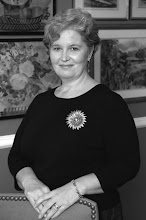The Dystonia Medical Research Foundation just concluded its annual Board of Directors and Medical and Scientific Advisory Council meetings. This seems like a good time to begin a new, for me anyway, method of communication. There are many who blog – but this is new for me and for the Foundation. Your comments on what we communicate, the Foundation’s plans, our activities and the blog itself are invited and welcome.
In preparing for the DMRF’s annual meeting, we reflected on our accomplishments in 2008 - it was a productive year, one in which we made progress toward reaching our goal of closing the Foundation’s doors forever. We are not there yet, but the work we did last year, the plans we developed to be implemented this year, and the partnerships formed or strengthened in 2008 are getting us closer to this goal with each passing day. We will get there – we just have to keep moving forward.
Some of these accomplishments include: funding 12 research grants, 4 fellowships – supporting young investigators and also fully implementing our plans to direct science through contracts with key investigators via the DMRF Cure Dystonia Initiative.
Scientific meetings are also a large part of our research strategy. In hosting these meetings we are able to help investigators make connections with one another, new areas of research that hopefully will be beneficial to advancing our knowledge of dystonia.
In 2008 an application was made for support of the development of a clinical network for dystonia. Dr. Buz Jinnah of
Other accomplishments for the DMRF in 2008 include: community educational forums held across the country, a Midwest regional meeting held in suburban
On behalf of the DMRF, I want to thank everyone for your support and many efforts. We are inspired by those who manage every day while battling dystonia. The courage we see in you serves as a source of strength to so many others.
Thank you.
Janet







Hi, Janet.
ReplyDeleteI am dealing with the secondary form of Dystonia (caused by a car accident). Apparently, the DBS surgery does not work as well on the secondary form (trauma-related) as it does the primary form (genetic form). This does make sense to me - believe it or not. My question is: Aside from Botox, which is not a choice for me for many reasons, is there research going on to find alternatives for those of us who have the secondary form?